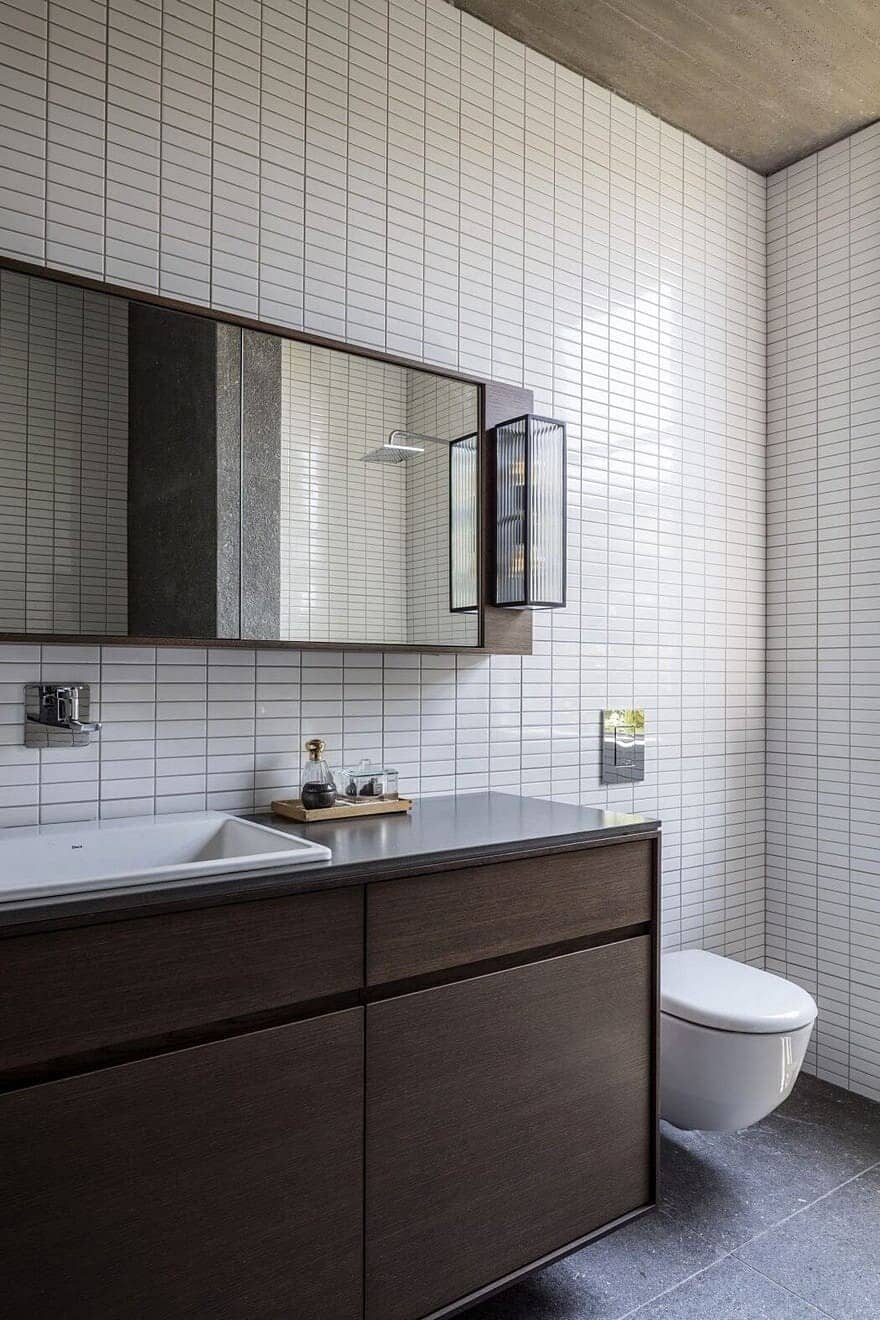Project: Jacobs-Yaniv House / Bare House
Architects: Jacobs-Yaniv Architects
Project: Jacobs-Yaniv House / Bare House
Architects in Charge: Tamar Jacobs, Oshri Yaniv
Location: Herzliya, Israel
Area: house of 270 Msq. plot size 600 Sqm
Photography: Amit Geron
Jacobs-Yaniv Architects designed this inspiring modern family residence, situated in Herzliya, Israel, in 2016. The architects used concrete and blockwork to build the home as they are the most common building materials and techniques used in Israel.
From the architects: Jacobs-Yaniv house is a house of two architects and two children. The design of our own home was an ongoing process of about 6 years. In that time we tried different forms, sizes, materials, details, all on paper and never realized due to the lack of time to commit ourselves to the design, budget etc. Considering that during that time we gained a lot of experience on other projects and spent hours of conversations with clients, listening to their dilemmas, we became more aware of our own needs and our values became clearer and clearer.
The point in time in which we finally felt ready to build was a combination of both professional and personal clarity as to what we are dreaming of and what we need.
After living on the plot in a small house for many years, and experiencing life by 2 large pecan nut trees, and many other fruit trees, we knew the new house would become part of the existing garden which has been there long before us. The green surroundings, ideal daylight and western breeze from the close by Mediterranean were our starting point.
The choice of materials was a very determined agenda to work with materials at their bare, basic state; celebrating form and structure in their most sincere condition. Celebrating also what is to us, a harmonious and subtle joining with the well-grounded garden. The same materials are carried through to the inside to blur boundaries between inside and outside.
Concrete and blockwork are the most common building materials and building techniques in Israel. On a practical note, the raw finishes weather respectfully and aesthetically unlike render that always needs refurbishment. We love the local materials a lot and are always disappointed when render covers everything.
The height of the house is derived from the dimensions of the blocks and of a subtle search for powerful harmony in scale between people and space, between the street and the house, between the land and the tress. A thin concrete roof hovers above the centre space allowing a constant glimpse at the sky and tree tops and examines the question of weight of the chosen ‘heavy materials’.
In the public area a two-sided iron library crosses and separates between kitchen and lounge without disrupting the ceiling. The design of the library purposefully creates two ‘gates’ between the two sides.
Questioning the space for a single family and provoking the programmatic layout, we have decided to split between the children’s area and our area to the ends of the house while the meeting point for everybody is in the centre, where lounge, kitchen and dining are right in front of the trees. The desire was that the lounge would act like a court yard; An enclosed garden, an extension of the garden inside the house. Each area is defined by its own roof which defragments and reduces the general span of the house.
The Jacobs-Yaniv house is built on one story, about half the height of the trees; So on the one hand it does not overpower the trees but on the other hand, when inside, it feels very spacious and airy, with openings facing east and west for optimum daylight and air. Outside the main house there are decked walkways and two additional enclosed service spaces which together create the atmosphere of a small village interweaving indoors and outdoors.

























